Propelled by gravity, snowslides have the power to rip through forests leaving distinctive cuts often mistaken for ski runs. Like the snow crystals that give them birth, slidepaths mark the landscape with an endless variety of shapes and sizes. Some paths thunder with snow many times a winter, others may lurk quietly for centuries.
Two types of snow avalanches What makes snow avalanche?Glacier National Park
1997-0-064 Glacier National Park, BC, April 1980. © Parks Canada, John G Woods.
Transcript Download MP4 (38.6 MB) Download WEBM (31.1 MB)
Avalanche technicians for Parks Canada discuss snow and how weather affects snow and avalanche activity.
Mount Fidelity Research Station, Glacier National Park, BC 2013. Revelstoke Museum & Archives A2013.18.1. © Parks Canada
Transcript Download MP4 (63.1 MB) Download WEBM (47.8 MB)
Avalanche technicians for Parks Canada study a snowpack.
Mount Fidelity Research Station, Glacier National Park, BC 2013 Revelstoke Museum & Archives A2013.18.2. © Parks Canada
Transcript Download MP4 (28.5 MB) Download WEBM (19.5 MB)
Avalanche technicians for Parks Canada describe how they study temperatures and snow crystal structure within the snowpack.
Mount Fidelity Research Station, Glacier National Park, BC, 2013. Revelstoke Museum & Archives A2013.18.3. © Parks Canada
Transcript Download MP4 (25.4 MB) Download WEBM (18.4 MB)
Avalanche technicians for Parks Canada discuss snow density and demonstrate a compression test
Mount Fidelity Research Station, Glacier National Park, BC, 2013. Revelstoke Museum & Archives A2013.18.4. © Parks Canada
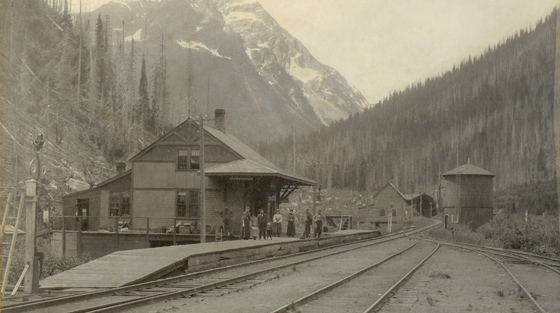
An avalanche demolished this railway station killing seven people including two children. The station was rebuilt in an avalanche-free area.
This was the first station on the Canadian Pacific Railway over Rogers Pass. BC. The railway was built in 1885 and the avalanche struck on January 31, 1899. © Revelstoke Museum & Archives 1683
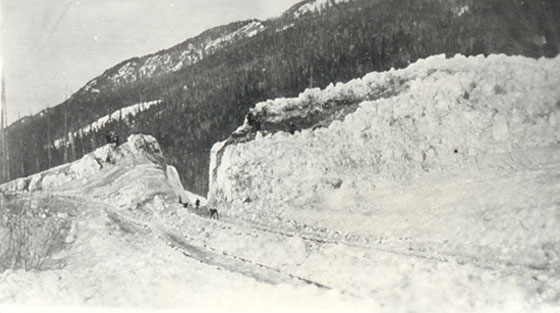
This railway near Revelstoke was dug out from under a huge volume of avalanche snow.
This slide has deeply buried a now-abandoned line of the Canadian Pacific Railway. © Revelstoke Museum & Archives 2548.
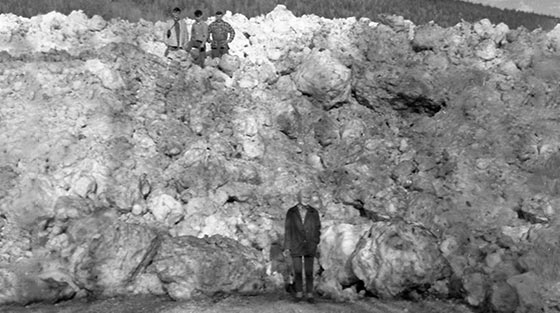
Snow avalanche deposits can dwarf humans.
This slide at Greenslide, South of Revelstoke, BC, has deeply buried a public roadway April 28, 1972. © Revelstoke Museum & Archives 5558, Brian Gawiuk.
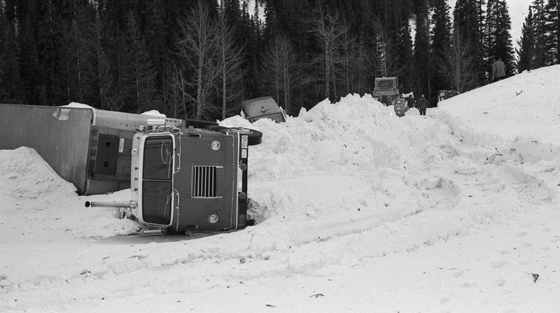
An avalanche hurled this semi-transport truck through the air and tossed smaller trucks aside. The highway was closed for days.
The vehicles included a semi-transport truck, two pick-ups, and an army vehicle towing a 105 mm Howitzer. Trans-Canada Highway, Rogers Pass, Glacier National Park, BC 1974 Revelstoke Museum & Archives 5533. © Jim Bay Collection
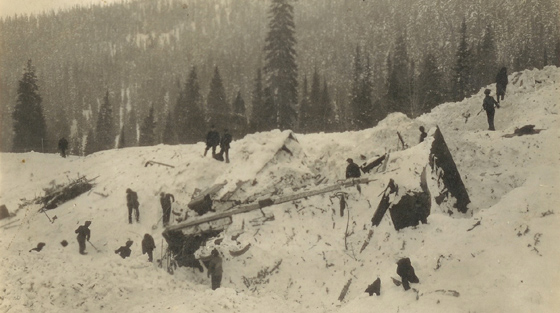
An avalanche flung this rotary snow plough weighing more than 100,000 kg off the railway tracks and uphill.
Fifty-eight workers died and the Canadian Pacific Railway was closed for days in Canada's worst avalanche accident. Rogers Pass, Glacier National Park, BC, 1910. © Revelstoke Museum & Archives 257
Transcript Download MP4 (32.1 MB) Download WEBM (21.5 MB)
Avalanches can travel at speeds greater than 216 km/hr—double the maximum speed limit on any Canadian highway.
This avalanche raced towards Bear Lake after being triggered by explosives in an avalanche safety mission protecting Hwy 31A, BC, 2007. Revelstoke Museum & Archives A2013.24.1. © BC Ministry of Transportation and Infrastructure.